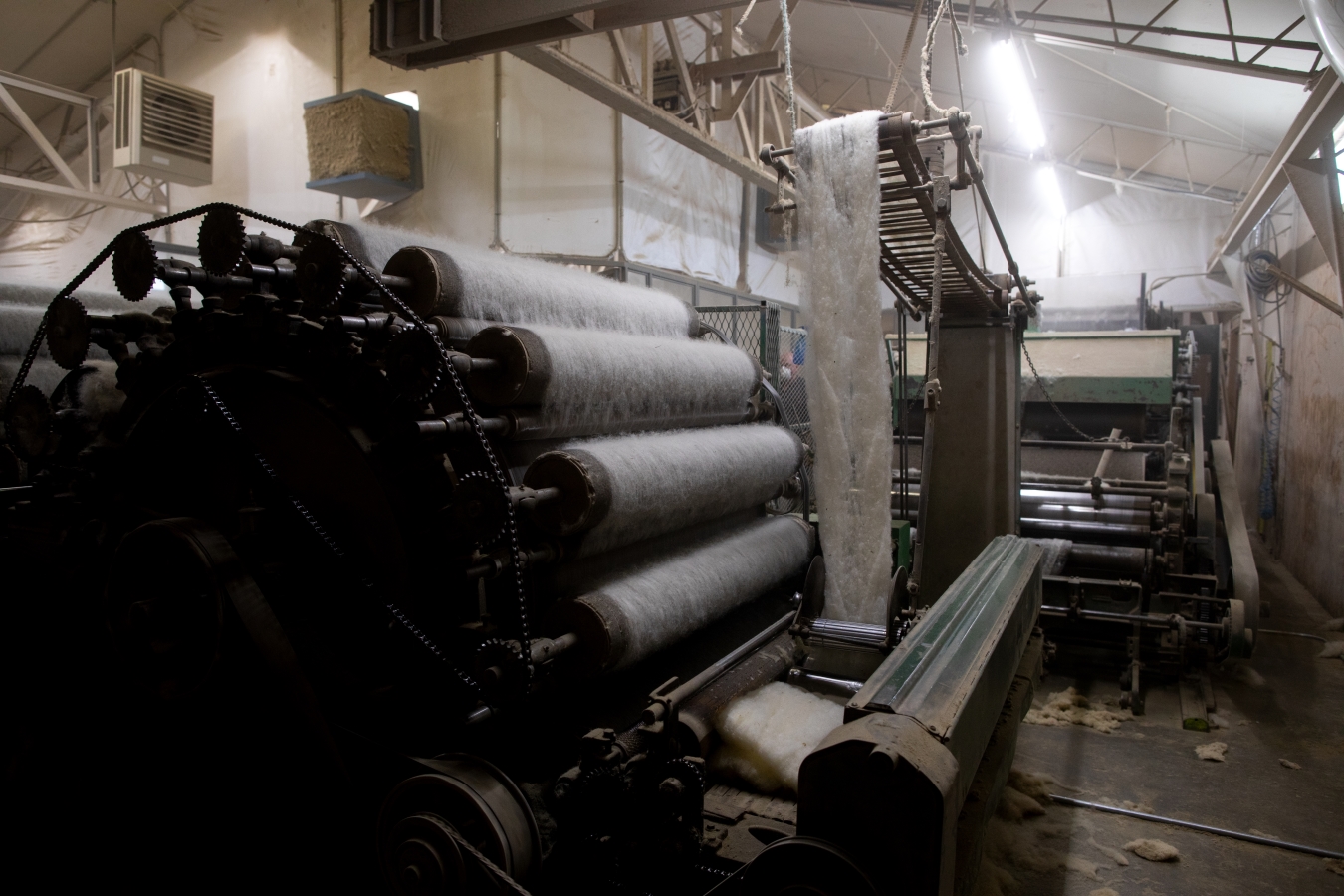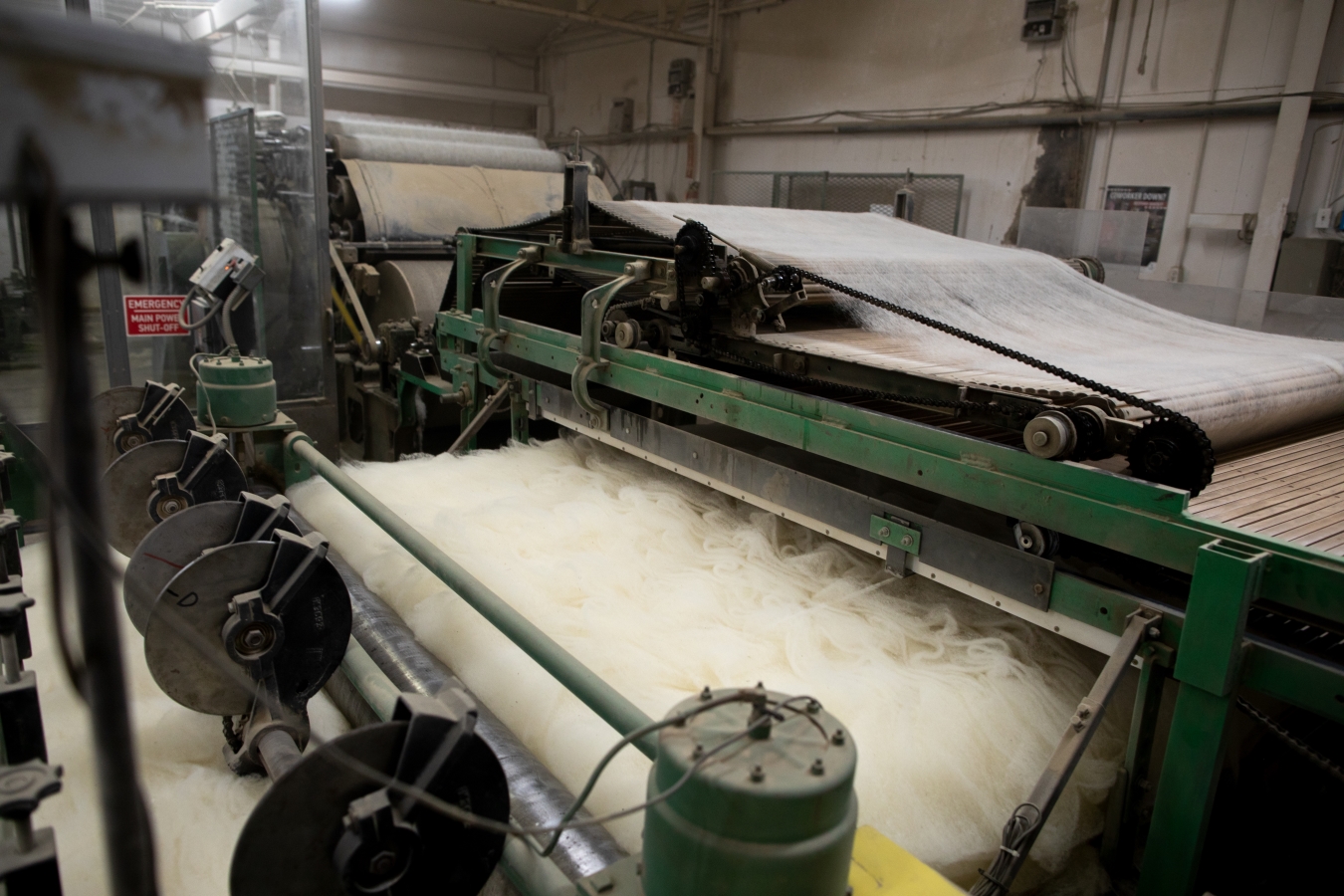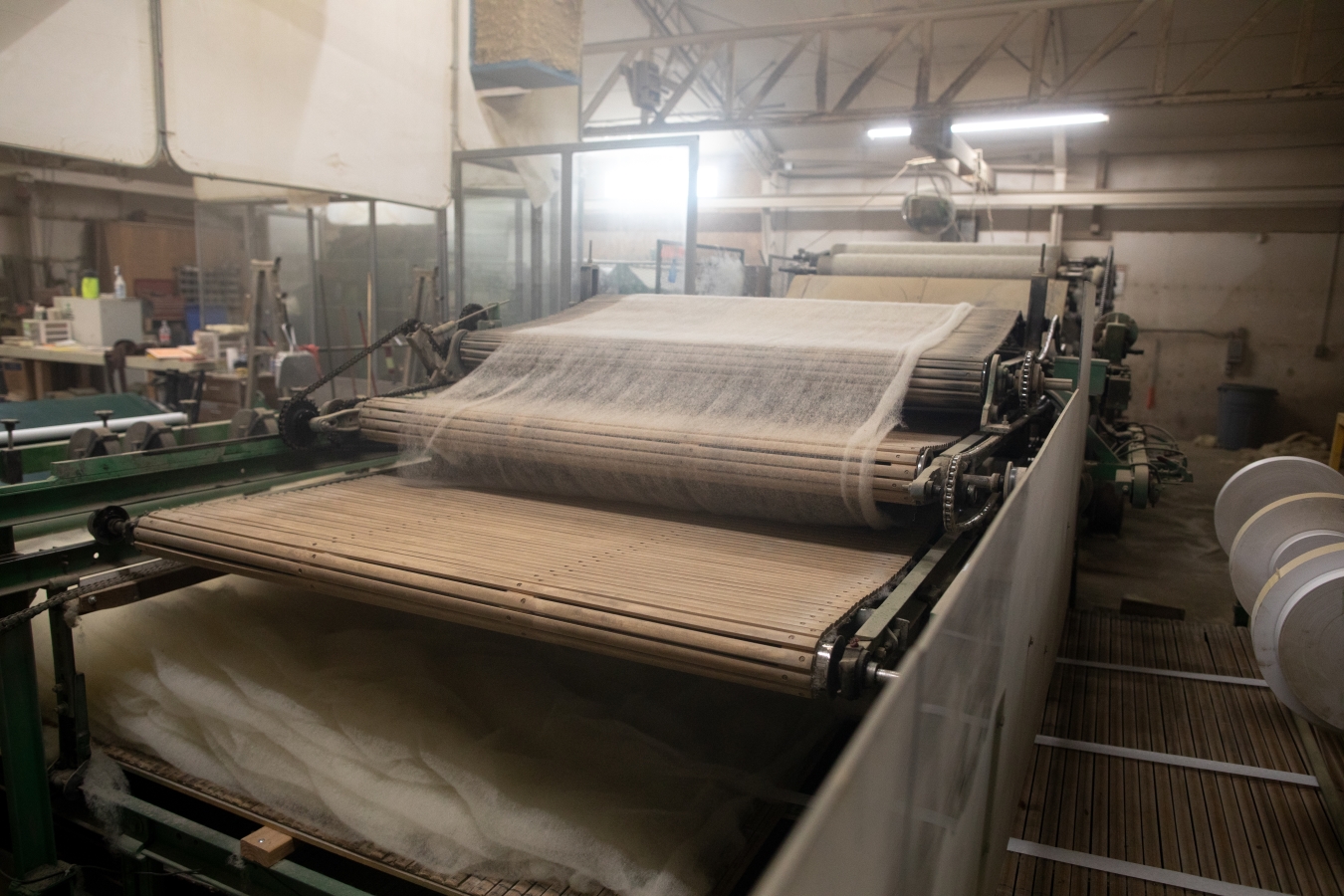After proper cleaning, the wool is shipped back to our California carding mill where it’s transformed into ready-to-use wool. We run the wool through a unique series of machines that comb and fluff the wool while also removing any remaining vegetable matter.
Little burrs and bits of plants get tangled into the wool and will not come out with simple washing. While many facilities use harsh chemicals to remove this matter, we avoid the use of chemicals with more sustainable practices.
Prior to carding, we avoid the use of chemicals by initially purchasing cleaner wool and skirting their wool multiple times. Once the scoured wool reaches the mill, we then rely on our incredible carding machines to create unbelievably clean wool batting.



Preparing for Carding
The first step in carding is to feed the wool through a “picker” machine. The picker pulls apart the dense bales of wool. This process reintroduces air to the wool and begins to loosen any remaining vegetable matter. Picking wool also continues to mix and blend the wool.
The Final Stage
After picking, the wool is then fed into carding equipment. The wool is processed through a three-breaker carding machine to comb the wool thoroughly. During this state, the wool methodically goes from coarse to fine.
Additionally, huge metal cylinders crush plant matter and help to move debris. The carders loosen and comb out plant matter as well as short and weak fibers.
The detangled wool is eventually brushed into thin sheets with all the fibers aligned in one direction. The last component of the carding machine, the “lapper,” layers the thin sheets of wool until they reach the desired thickness and width of batting.
